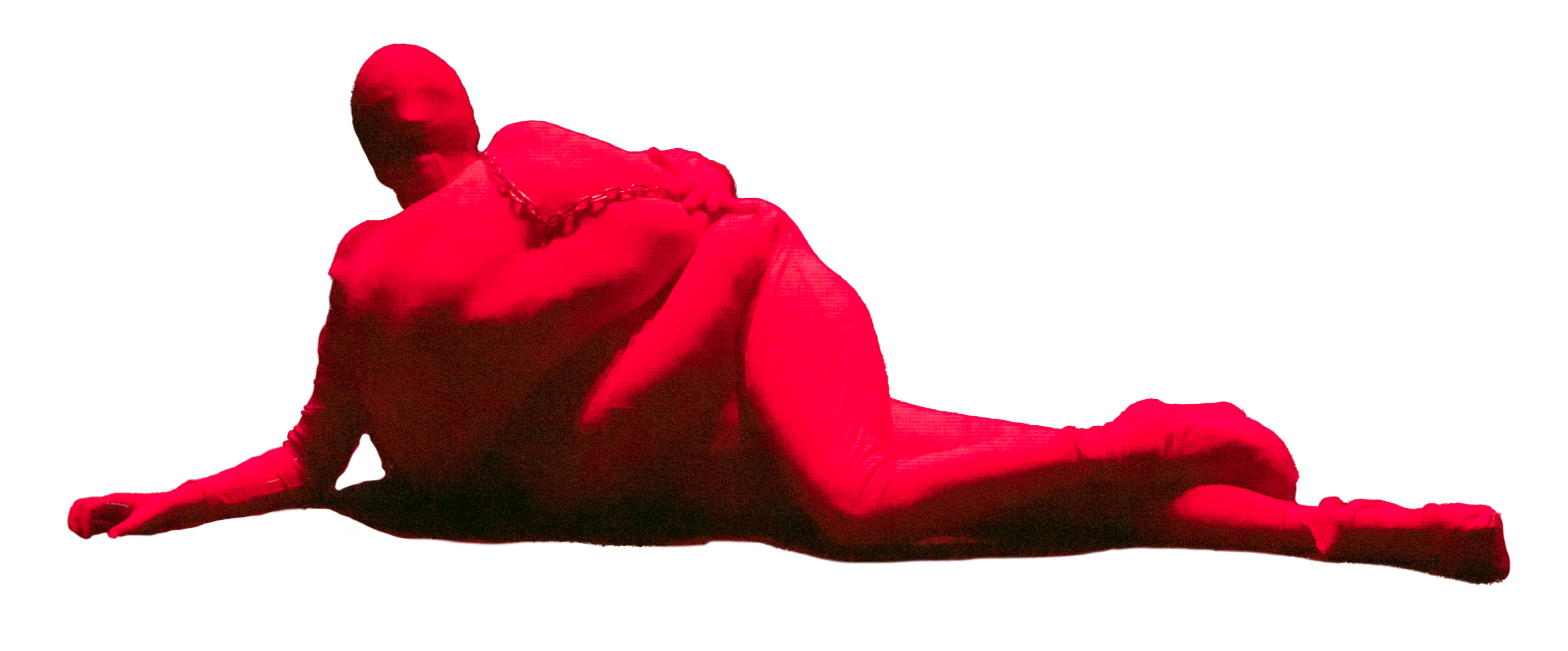Trouble Score
EN
NL

Please, Open the Curtains
Please, Open the Curtains
In season 26-27, NTGent will host a new project by promising Flemish theatre maker Ferenc Balcaen (1997). Balcaen previously impressed audiences with his graduation performance Tristis (2022), a visceral exploration of human metamorphoses inspired by Hieronymus Bosch's painting The Garden of Earthly Delights, and with Scapegoat (2024), in which he uses a broad palette of musical genres and traditions to encounter the inhabitants of Dante's Inferno.
PLEASE, open the curtains, produced by NTGent in coproduction with DESINGEL and Hermes Ensemble, is a theatrical exploration of melancholy. It reflects on social alienation, vulnerability, human connection, and the emotional weight of change and loss. Forgotten figures lose themselves in solitude, wandering through a space that forces them to face their emptiness. The floor, cold as steel, gently trembles beneath their feet. Artificial flowers appear to bloom, but only serve as echoes of something that was once vibrant.
In this performance, inspired by Delia Derbyshire's The Dreams and Bruegel's Landscape with the Fall of Icarus, melancholy is not presented as a weakness, but as a search for connection and solace. It is a confrontation with instability and transience. A plea for beauty and hope.
On melancholy
Melancholy has never been neutral. Hannah Arendt described it as the “calm in the eye of the storm”: a stillness that is at the same time part of movement. In melancholy, one feels the gap between the world as it is and the world as it ought to be. This gap cannot be closed, and precisely for that reason melancholy can carry both despair and hope. Throughout history, however, this feeling has been distributed unequally.
For men, melancholy often carried an elevated status: a sign of genius, reflection, artistry. For women and queers, a similar experience was consistently reduced to pathology. Their grief became “hysteria,” their loneliness “neurosis.” In his essay Trauer und Melancholie (1917), Freud spoke of the hidden mourning for a lost or forbidden love. Judith Butler has pointed out that this mechanism pushes queer people into a state of permanent melancholy: their grief is made socially invisible and therefore turns inward. Julia Kristeva understood melancholy as a collapse of language, a loss that can only be expressed through silence or art.
It is tempting to read this history solely as one of oppression, but there is also another movement within it. Women and queer artists have gradually reclaimed melancholy. Where their bodies had long been depicted as hysterical, they made melancholy visible again as a source of creativity and resistance. In Frida Kahlo’s work, suffering takes shape as self-portraiture; in Nan Goldin’s, as a collective memory of loss; in Tracey Emin’s, as installations that transform shame into testimony.
In this way, melancholy proves to be more than an individual condition. It is a political sensitivity, a way of seeing that acknowledges both loss and desire.
Those who do not experience melancholy solely as powerlessness may also find clarity in it: a critical distance, a refusal to be blinded by euphoria or illusion.
Perhaps that is the power of melancholy today. Not the abandonment of hope, but the recognition that hope always goes hand in hand with loss. Not the hysteria of a diagnosis that silences us, but an attentive way of looking at the world—one that creates space for a different beginning.
Enclosed garden
The scenography of Please, Open the Curtains builds on the concept of the enclosed garden (hortus conclusus): a medieval religious motif rooted in the Biblical Song of Songs, where it symbolized the virginity and sanctity of Mary. In monasteries, the enclosed garden served as a place of silence, prayer, and healing, often filled with symbolic plants. In the 15th and 16th centuries, small-scale artworks (altarpiece-like assemblages) were created in the Southern Netherlands depicting this motif and serving as devotional objects.
The garden carried rich symbolism: it referred to Mary’s purity, but also to paradise, the cosmos in miniature, and the harmony of creation. In artworks, Mary is often shown in a walled garden, surrounded by symbolic flowers. The motif also continues in contemporary art, though in more abstract forms: enclosed spaces or figures that evoke silence, seclusion, and mystery. These modern variations invite introspection and multiple layers of interpretation.
Yet there is also a critical side: seclusion can turn into isolation and moral blindness. When beauty and silence are detached from the reality outside the garden, repression or indifference may take hold. In short, the enclosed garden is both a powerful metaphor for spiritual depth and a warning against a closed-offness that no longer connects with the world.
Duration
70 min
Director's noteDownload
Meet the teamDownload
Distribution & Sales
Floria Lomme
floria.lomme@ntgent.be
+32 (0)472 66 66 79
Technical director
Karel Clemminck
karel.clemminck@ntgent.be
+32/486 16 31 04
Communications dep.
EN
NL
NL
EN
EN
NL